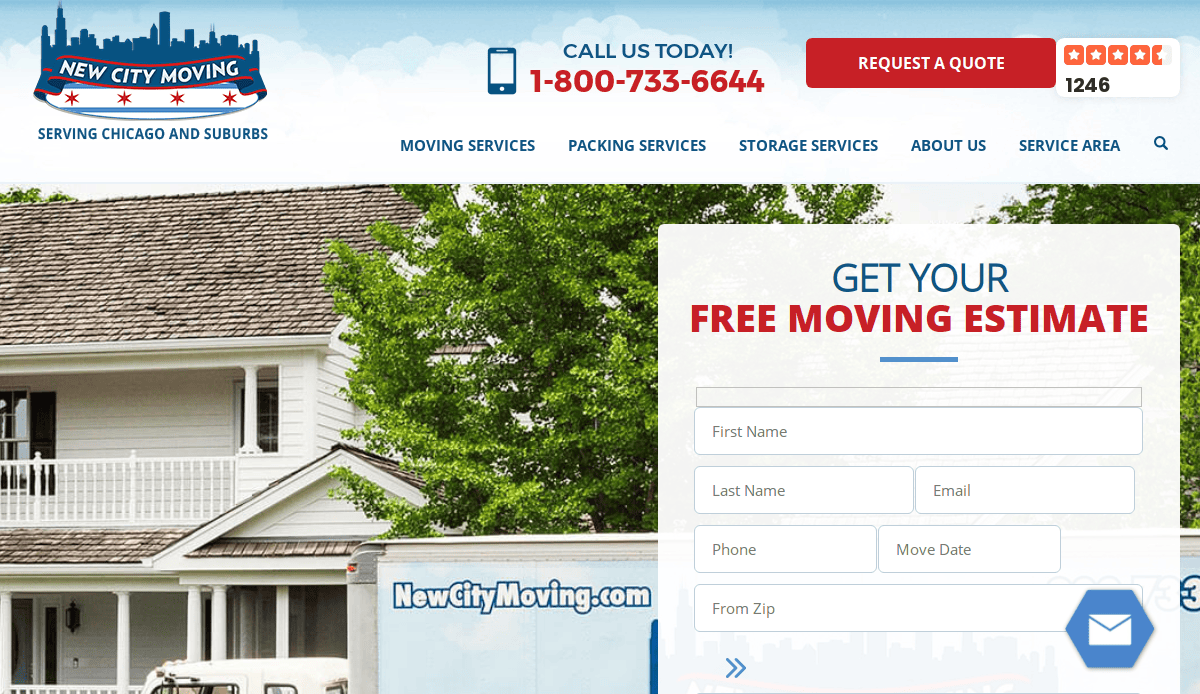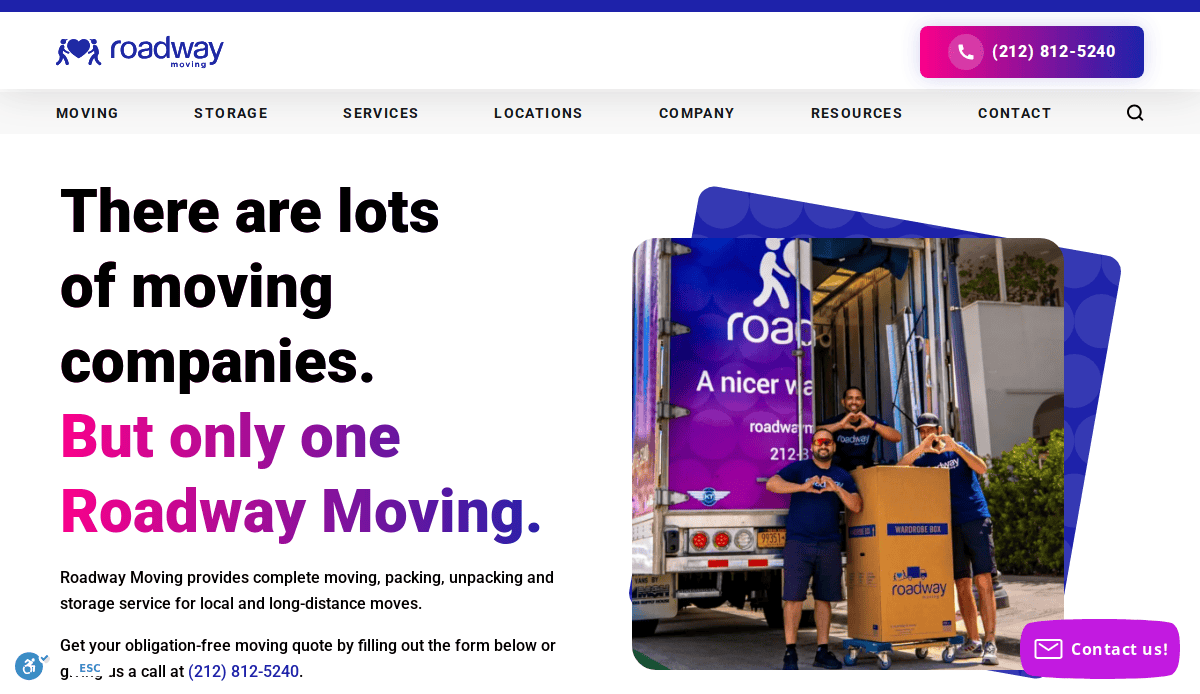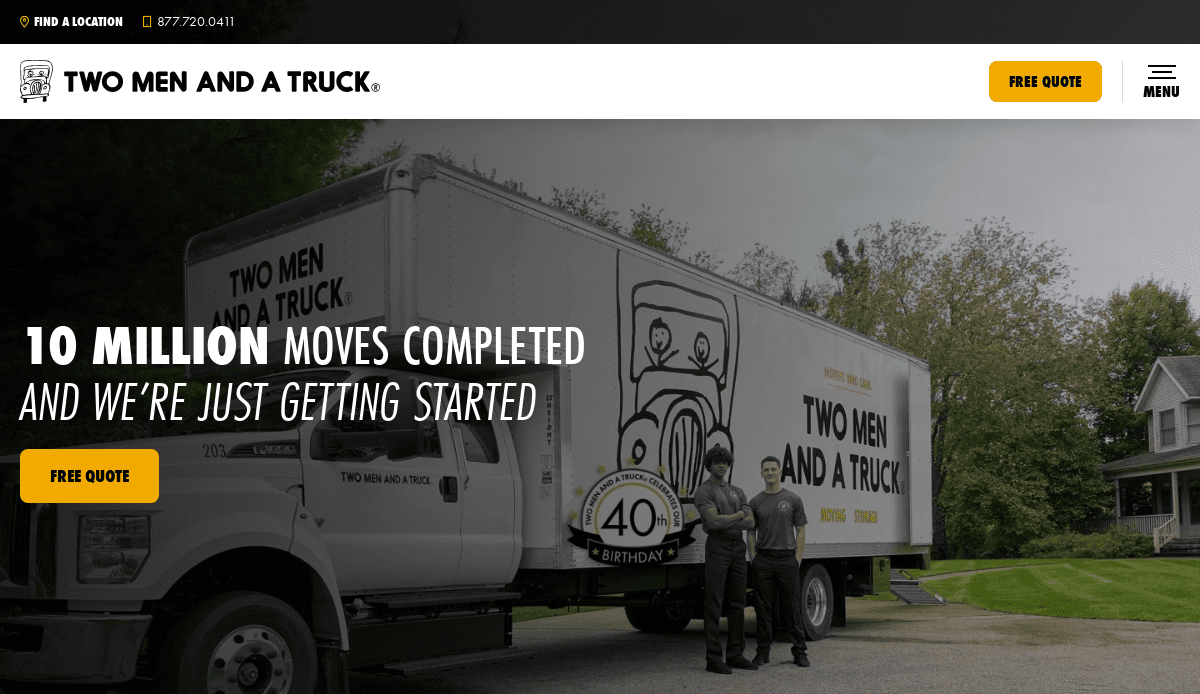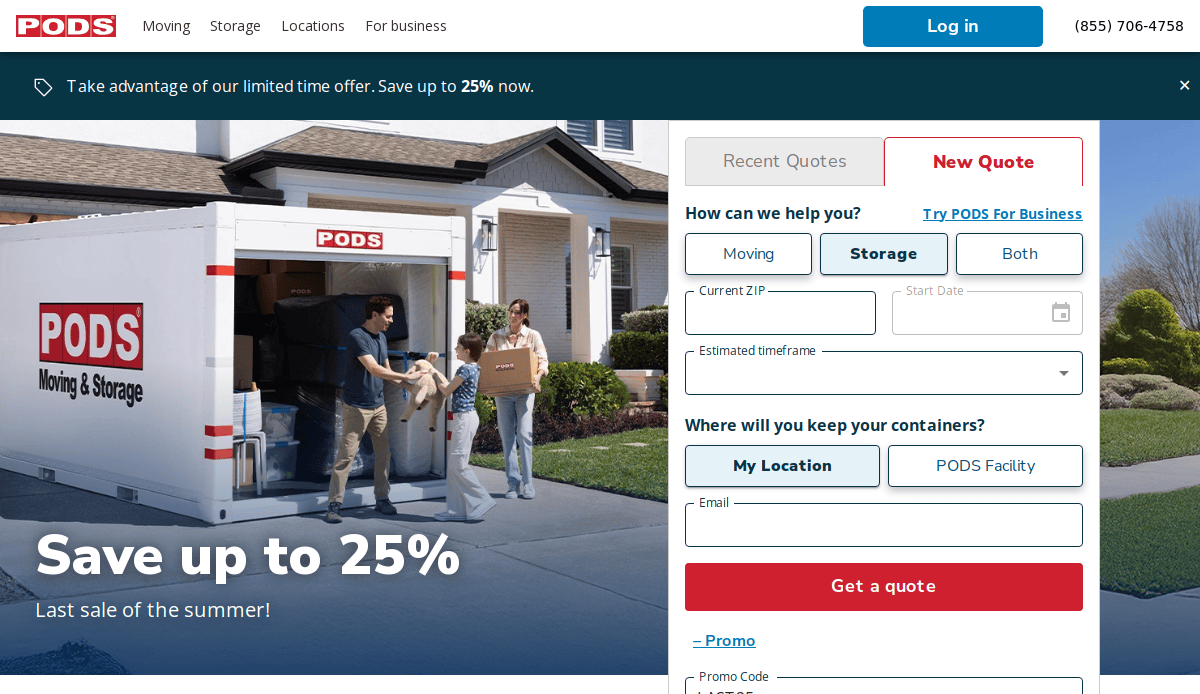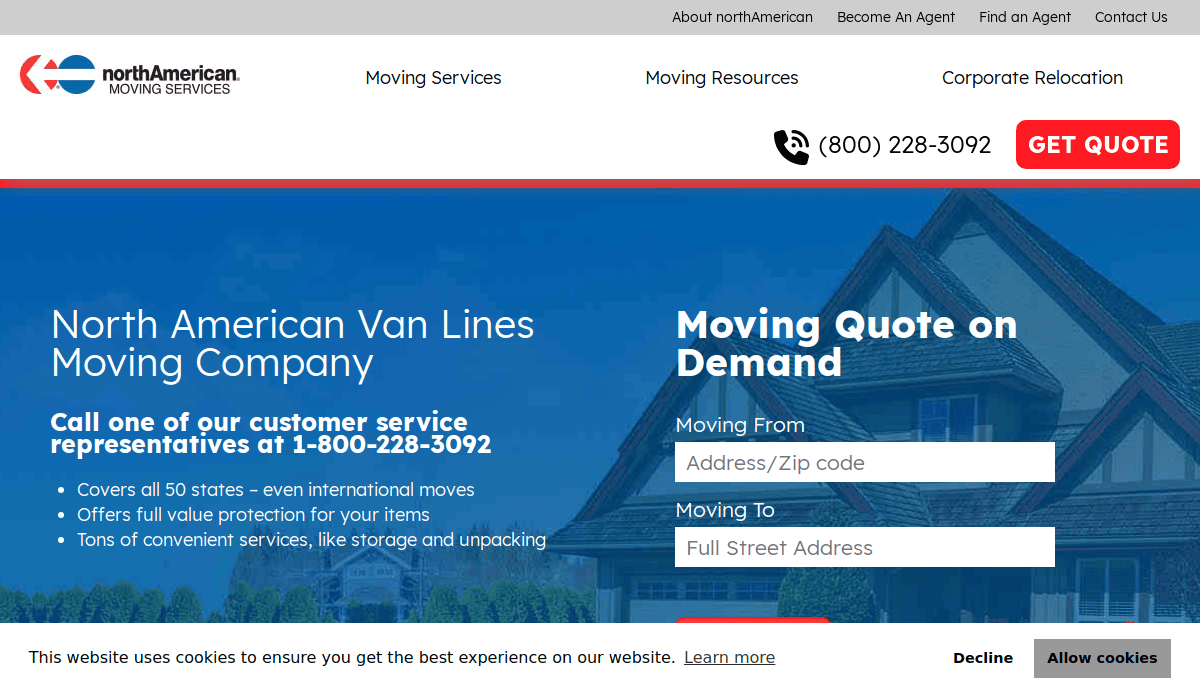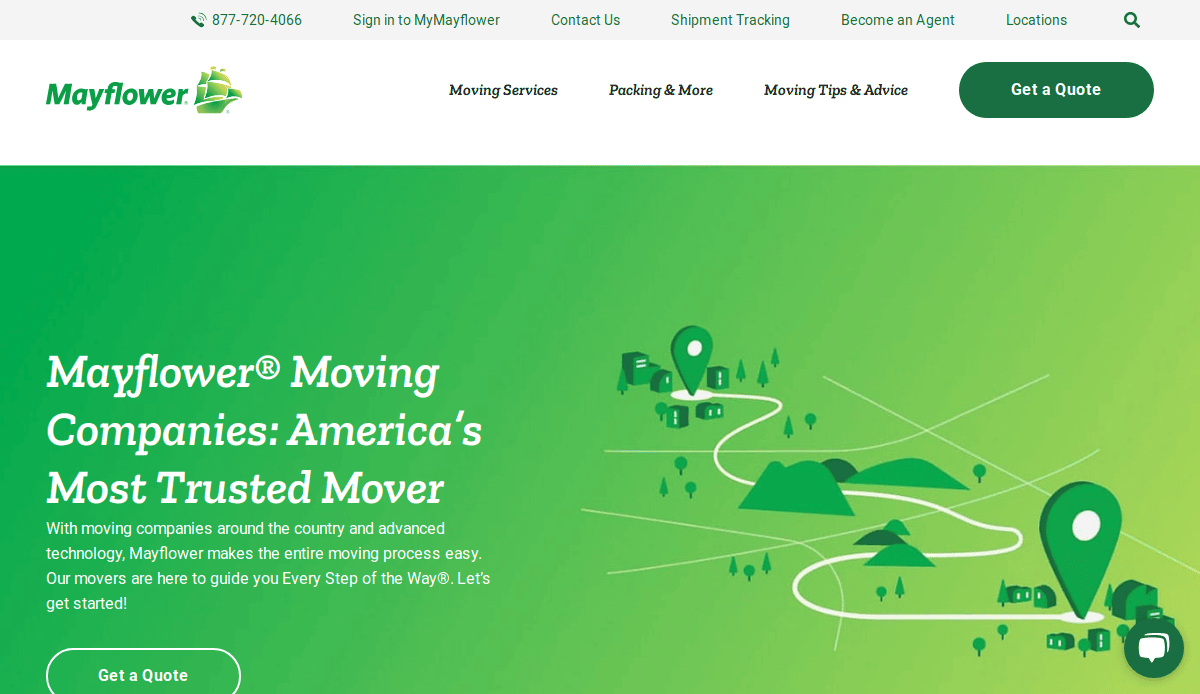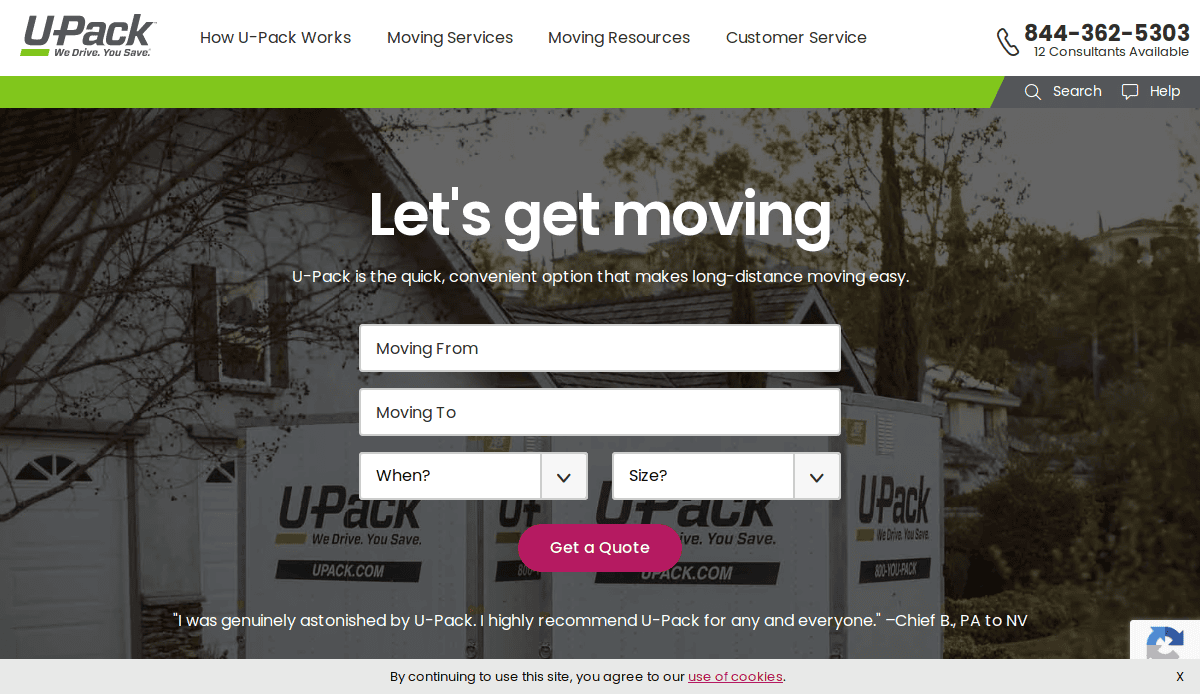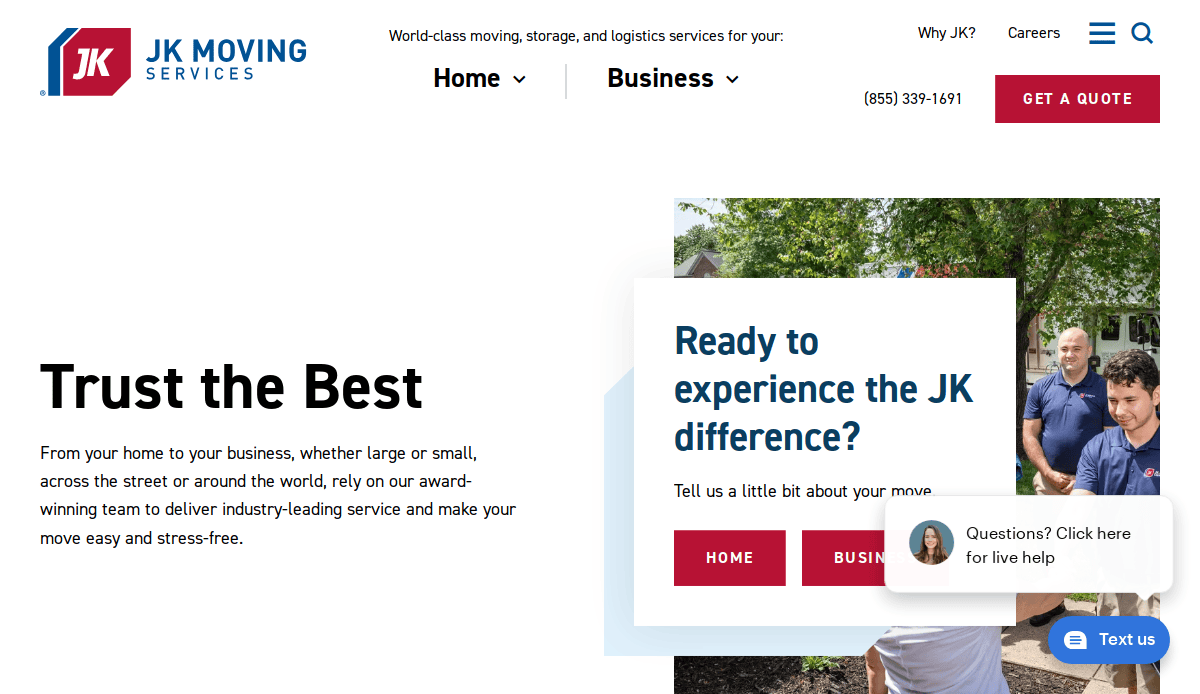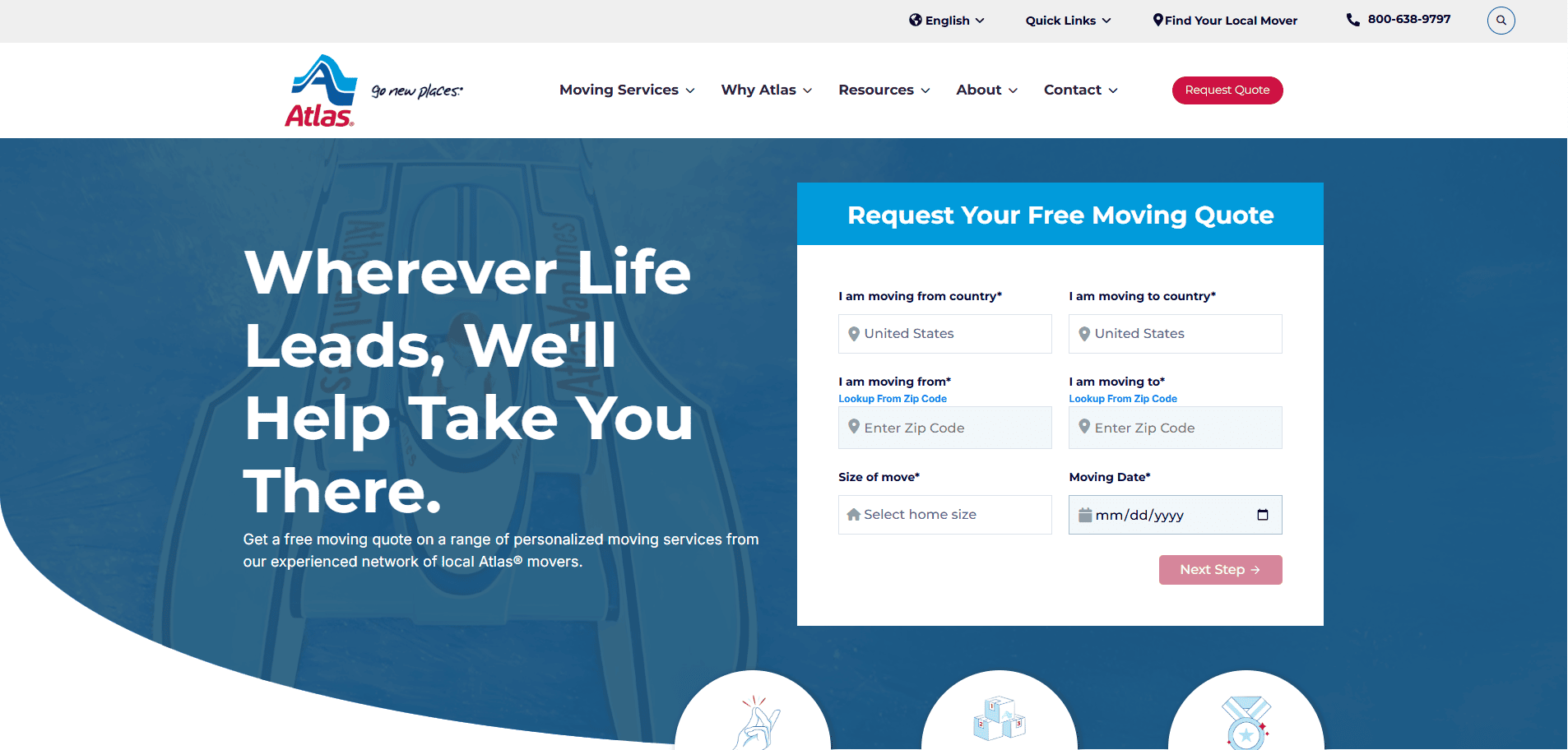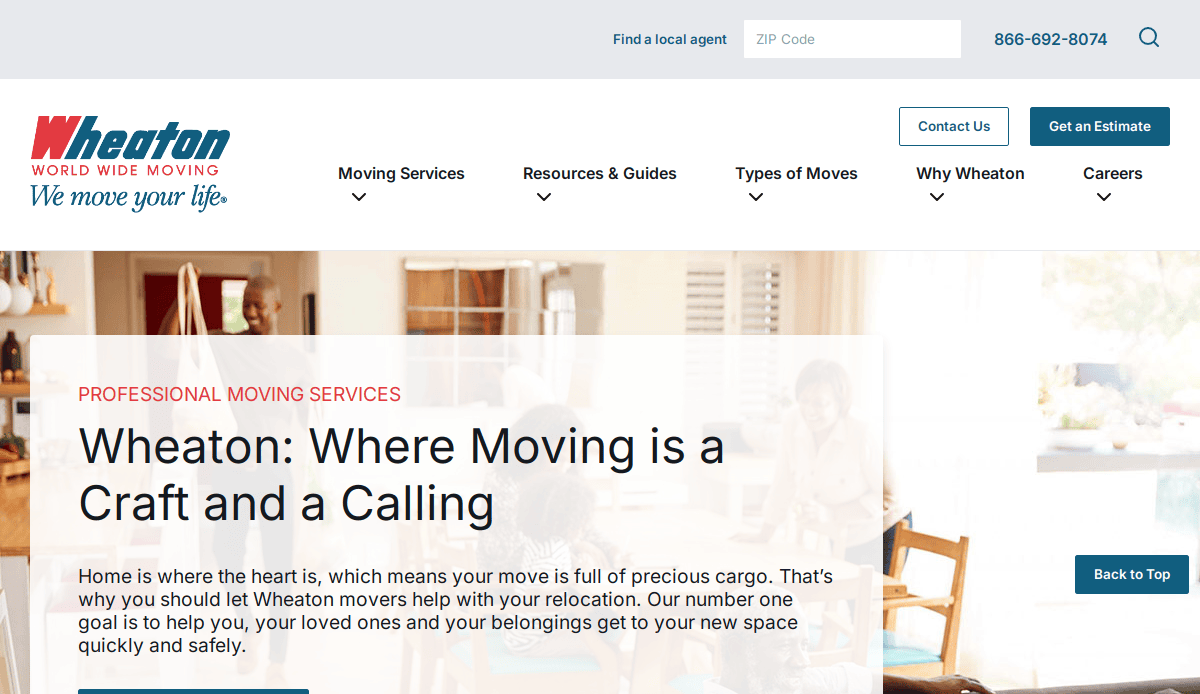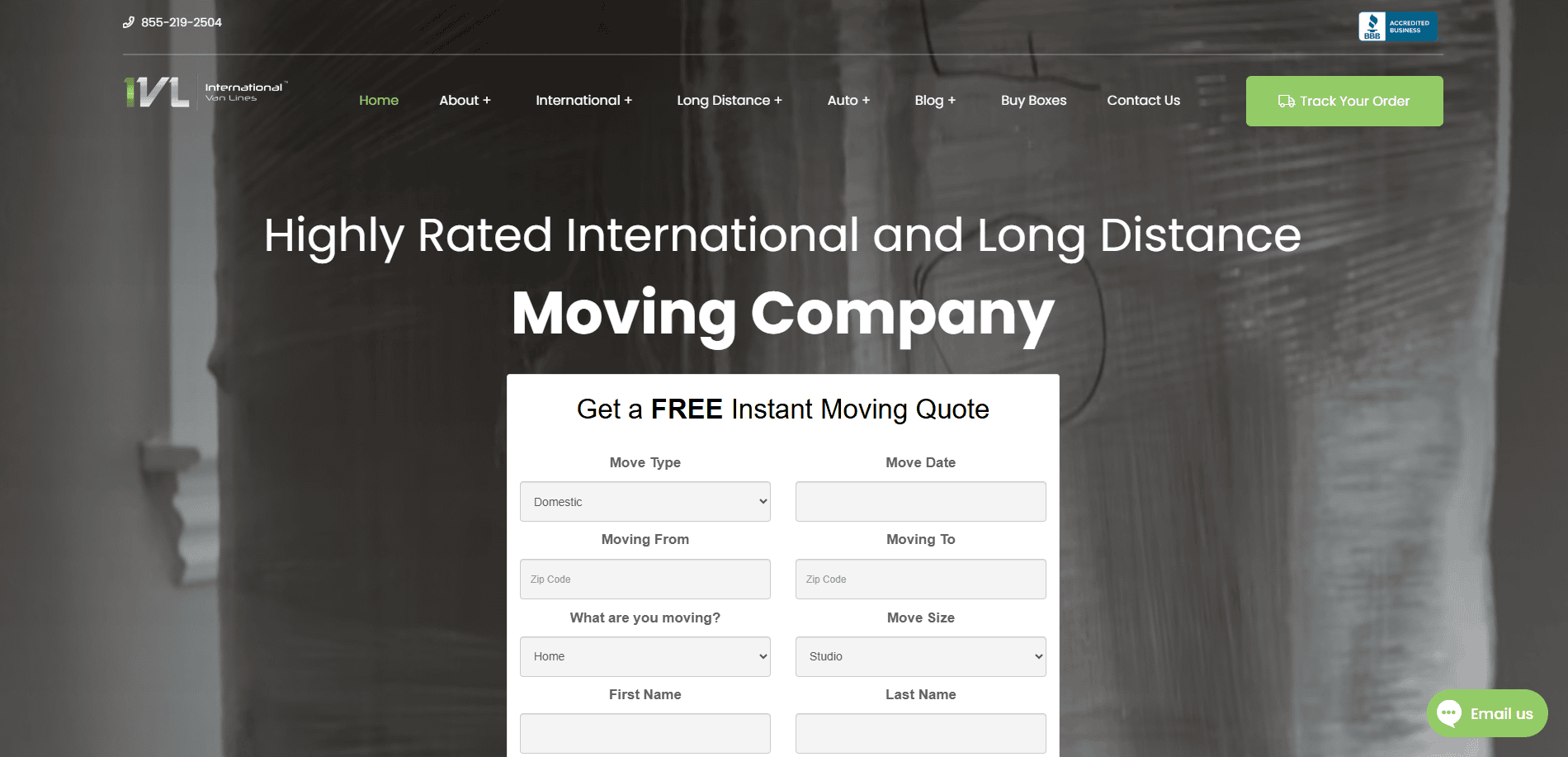Just looking for our Best Moving Company Website examples list?
In the competitive moving industry, your website is your most powerful salesperson, available 24/7. Many companies still operate with outdated or generic sites, missing out on a massive opportunity to attract and convert new customers. If your moving business relies on referrals alone, you’re leaving money on the table. A truly well-designed and high-performing website design is essential for capturing new customers’ attention and driving tangible results.
Think about it: when a mover is searching for moving services, where do they go first? The search engine. Your online presence needs to be more than just visible; it needs to be captivating. This guide will reveal how strategic web design and robust SEO can transform your site from a passive brochure into an active lead-generating machine. We’ll delve into how clear navigation, compelling engaging content, and a seamless user experience—especially on mobile devices—can help you boost your lead generation and provide the information they need.
From an impactful homepage that instantly grabs attention to authentic testimonial sections that build trust, we’ll show you how to optimize every element for success through smart digital marketing strategies.
I. Website Planning & Purpose: Laying the Foundation for Success
The planning phase is arguably the most critical step in creating a high-performing website. Unlike a generic business, the moving industry has unique demands, and a successful online presence must address them directly. It’s about more than just aesthetics; it’s about strategic foresight that positions your website as an indispensable tool for both your business and your potential customers.
Our approach begins with a deep dive into your specific business goals. Are you looking to increase local moves, expand into long-distance services, or boost your commercial moving division? Understanding these objectives allows us to tailor the web design to actively support them. This involves extensive research into your target audience – who are they, what are their pain points when moving, and what information do they seek online? For instance, someone planning an interstate move will have very different needs and questions from someone looking for local packing assistance.
Furthermore, we analyze the competitive landscape. What are other successful sites in your industry doing well, and more importantly, where are their websites falling short? This competitive analysis helps us identify opportunities to differentiate your services and build a website that stands out. We consider the specific types of moving services you offer – residential, commercial, packing, storage, specialty item transport – and ensure each service is clearly articulated and easily discoverable. This initial planning phase also includes mapping out the entire UX journey, from the moment a visitor lands on your homepage to when they request a quote or call your office.
A key part of this planning is also integrating SEO from the ground up. Rather than an afterthought, optimization considerations are woven into the very structure and content strategy. This ensures that when someone searches for “best local movers” or “long-distance moving costs,” your site has the best chance to appear prominently. The ultimate purpose of this meticulous planning is to create a website that looks professional and functions as a powerful lead-generation and customer service platform, providing all the necessary data seamlessly. This detailed groundwork helps prevent costly revisions later and ensures your investment in digital marketing yields maximum returns, much like the successful strategies employed in the broader logistics sector, which you can explore further in our insights on Best Logistics Website Designs.
II. Design Principles: Crafting an Effective Website
Once the strategic planning is complete, the focus shifts to translating those insights into a visually appealing and highly functional website design. Effective web design for the moving industry hinges on several core principles that ensure a seamless UX and encourage conversion.
Firstly, Clarity and Simplicity are paramount. When a potential customer lands on your website, they are often under stress and seeking quick answers. A cluttered design, confusing user pathways, or an overwhelming amount of information will drive them away. Your homepage should immediately convey what your business does, who it serves, and how to get in touch. Clear headings, concise copy, and intuitive menus are non-negotiable.
Secondly, Mobile-Friendliness is Not Optional. A significant portion of your target audience will access your site from mobile devices. Google’s mobile-first indexing means a mobile-friendly design isn’t just good practice; it’s critical for SEO and search rankings. Every element, from text size and button placement to image loading speed, must be optimized for smaller screens, ensuring a consistent and positive experience across all devices.
Thirdly, Trust and Credibility must be woven into the visual fabric. Moving is a highly personal and often expensive service, requiring a significant leap of faith from the customer. Your design should exude professionalism, reliability, and transparency. High-quality imagery of your team, clean branding, clear contact information, and easily accessible licenses or affiliations all contribute to building trust. Prominently featuring authentic testimonial sections, whether through text or video, is crucial here.
Fourthly, Strong Calls-to-Action (CTAs) are vital for conversion. Every page should guide the user towards the next logical step, whether it’s “Get a Free Quote,” “Schedule a Consultation,” or “Contact Us.” These CTAs should be visually prominent, use compelling action-oriented language, and be strategically placed throughout the site to convert.
Finally, Speed and Performance are non-negotiable. A slow-loading website frustrates users and negatively impacts your SEO. Optimized images, clean code, efficient hosting, and leveraging caching are all critical to ensuring your site loads quickly, keeping users engaged, and improving your visibility. A fast, adaptive, and well-designed site ensures that the necessary information is always at their fingertips.
III. Content & Navigation: Guiding Your Customer’s Journey
The architecture of your website’s content and its action steps are paramount to both UX and SEO. A logical, intuitive structure ensures that potential customers can easily find the information they want, while also signaling to site crawlers the relevance and authority of your online presence.
Effective content strategy for the moving industry begins with understanding the distinct phases of a customer’s moving journey. Your homepage should act as a central hub, providing a concise overview of your moving services and directing users to more detailed pages. Beyond the homepage, essential content sections include:
- Services Pages: Each core service (e.g., local moving, long-distance moving, commercial moving, packing services, storage solutions, specialty item transport) should have its own dedicated page. These pages must be comprehensive, detailing what each service entails, its benefits, and what customers can expect. Use clear headings, bullet points, and high-quality images to break up text and improve readability.
- “About Us” Page: This is where you build trust and connection. Share your company’s story, values, mission, and the expertise of your team. Highlighting your experience and dedication to customer satisfaction can significantly influence a potential customer’s decision.
- FAQ Section: A robust FAQ page can address common questions and alleviate customer anxieties upfront, reducing the need for direct inquiries and improving UX. This also provides valuable long-tail SEO opportunities.
- Testimonial/Reviews Page: While testimonials can be sprinkled throughout the site, a dedicated page compiling glowing reviews and success stories (perhaps with photos or even video snippets) provides strong social proof and builds immense credibility for your business.
- Blog/Resource Center: This is your hub for engaging content that answers specific user queries and demonstrates your industry expertise. Think guides on “How to Pack Fragile Items,” “Checklist for Moving with Kids,” or “Understanding Moving Insurance.” This evergreen content is critical for long-term SEO and attracting organic traffic.
Navigation should be intuitive, direct, and consistent across all pages, including mobile devices. A clear main menu (header) should provide quick access to primary service categories and essential information. Consider a footer for less frequently accessed but important pages like privacy policy, terms of service, and sitemap. Breadcrumbs are also excellent for helping users understand their location within the site’s hierarchy. The goal is to minimize clicks required to reach key information or to increase your leads through a clear call to action. By meticulously structuring both your engaging content and your user pathways, your website can effectively guide visitors, build trust, and ultimately drive conversions.
IV. Visual Elements: Building Trust and Communicating Brand Identity
In the moving industry, where trust and reliability are paramount, the visual elements of your website design play a crucial role in shaping a potential customer’s perception of your business. Beyond mere aesthetics, effective visuals support the overall UX and powerfully communicate your brand identity, helping to boost leads and distinguish you from other moving companies.
Firstly, High-Quality Imagery is non-negotiable. Forget generic stock photos of smiling families next to cardboard boxes. Invest in professional, authentic photographs that showcase your actual team, your well-maintained fleet, and your movers in action (e.g., carefully packing, loading, or securing items). Seeing real people and real equipment fosters trust and assures customers that your company is legitimate and capable. High-resolution images of clean, organized storage facilities (if applicable) can also be a significant trust builder.
Secondly, Consistent Branding across all visual elements reinforces your professionalism and memorability. This includes your logo, color palette, typography, and even the style of your illustrations or icons. These elements should be consistently applied from your homepage to every service page, ensuring a cohesive and recognizable online presence. A well-defined brand identity helps your website stand out in a crowded market and builds a strong impression that resonates with new customers.
Thirdly, Video Content offers an unparalleled opportunity for engagement and transparency. Short, professional videos can effectively convey your company’s personality, demonstrate complex moving services (like specialty item transport), or offer “meet the team” introductions. A video testimonial from a satisfied client is far more impactful than a written one, adding a layer of authenticity and social proof. Videos can break down information into easily digestible formats and significantly improve the user experience, keeping visitors on your site longer and deepening their understanding of your offerings.
Fourthly, Effective Use of White Space and a clean layout are crucial for readability and a modern feel. Cluttered designs overwhelm users, especially on mobile devices. Ample white space allows your key messages, images, and calls-to-action to breathe, making the information they need easier to absorb and improving overall action steps.
Finally, Interactive Elements and Visual Cues can guide the potential customer through their journey. This could include subtle animations on buttons, visual progress bars for quote forms, or icons that quickly convey service features. These elements make the website more engaging and intuitively direct the user’s eye towards important information and conversion points. By thoughtfully integrating these visual elements, your web design becomes a powerful asset in building trust and driving business growth.
V. Ongoing WordPress Maintenance: Ensuring Long-Term Performance and Security
Building a robust website on WordPress is an excellent investment, but its continued success, strong SEO, and ability to increase lead generation depend heavily on diligent, ongoing maintenance. Think of your website as a vehicle; without regular service, even the best-engineered car will eventually break down. Website downtime or security vulnerabilities translate directly into lost potential customers and damaged reputation.
Regular WordPress maintenance encompasses several critical areas:
- Security Monitoring and Updates: WordPress, its plugins, and themes are constantly evolving, and so are potential threats. Timely updates for the WordPress core software, all installed plugins, and your chosen theme are essential. These updates often include security patches that close vulnerabilities hackers could exploit. Beyond updates, continuous security monitoring for malware, suspicious activity, and brute-force login attempts is crucial. Implementing a robust security plugin and a Web Application Firewall (WAF) acts as a front-line defense, protecting your site and sensitive customer data.
- Performance Optimization: Website speed significantly impacts UX and search rankings. Ongoing performance optimization involves several tasks. This includes optimizing images (compressing them without losing quality), minifying CSS and JavaScript files (removing unnecessary characters from code), leveraging browser caching, and regularly optimizing your database. An overloaded or unoptimized database can slow down your site, impacting everything from page load times to the efficiency of your forms. Regularly cleaning up old revisions, spam comments, and unused data within your WordPress database keeps it lean and fast.
- Regular Backups: Despite all security measures, issues can arise. A robust backup strategy is your ultimate safety net. Implement automated daily or weekly backups of your entire WordPress site – including both files and database. These backups should be stored securely off-site, allowing for quick and complete restoration of your website in the event of a hack, server failure, or accidental data loss.
- Broken Link Checks: Over time, links on your website can break due to deleted pages, external website changes, or typos. Broken links harm user experience, frustrate potential customers trying to find the data they need, and can negatively impact your SEO by signaling a poorly maintained site to search engines. Regular scans for broken links, followed by their repair or redirection, are vital for maintaining site integrity.
- Plugin and Theme Management: Periodically review your installed plugins and themes. Remove any that are no longer needed or haven’t been updated recently by their developers, as these can pose security risks or create conflicts. Using only high-quality, reputable plugins minimizes potential issues.
By committing to ongoing WordPress maintenance, your website remains secure, fast, and fully functional. This proactive approach safeguards your digital investment, ensures a positive user experience, and consistently supports your efforts to generate leads and grow your business online.
Key Takeaways: Design an Industry Website That Dominates
Building a successful company website goes far beyond just listing your services. To truly stand out, capture leads, and rank high in search results (including AI Overviews), consider these essential takeaways:
- Embrace Customer Psychology: Acknowledge and address the inherent stress and anxiety of moving. Your website should be a reassuring resource, providing clarity, trust signals, and easy access to solutions, not just a sales pitch. Design with empathy to build immediate rapport and credibility.
- Implement Conversion-Centric Features: Move beyond basic contact forms. Integrate advanced tools like interactive moving cost calculators, AI-powered chatbots for instant support and lead qualification, and virtual home survey options. These features provide immediate value to users and streamline the conversion process for your business.
- Prioritize Authentic Visual Storytelling: Ditch generic stock photos. Showcase your real team, behind-the-scenes glimpses, and genuine customer testimonials through high-quality photos and videos. Authentic visuals build trust, humanize your brand, and create a deeper connection with potential clients. Consider virtual tours of your facilities if applicable.
- Dominate with Conversational and Hyperlocal SEO: SEO for movers is no longer just about keywords. Focus on answering user intent with detailed, conversational content that addresses common questions. Implement a robust hyperlocal SEO strategy with neighborhood-specific service pages and deeply optimized Google Business Profile listings. Optimize for voice search queries to capture diverse traffic.
- Commit to Continuous, Data-Driven Optimization: Your website is an evolving asset. Regularly analyze key metrics like conversion rates and bounce rates. Utilize A/B testing for calls-to-action, form layouts, and design elements to continually improve performance. Integrate user feedback to ensure your site remains highly effective and user-centric, positioning our agency as your long-term growth partner.
20 Professional Moving Company Website Designs That Make a Solid First Impression
Here are 20 of the best moving company websites, highlighting effective design and functionality, including a few designed by our award-winning agency:
1. New City Moving
Location: Chicago, IL
3 Key Takeaways:
- Intuitive Navigation: Exceptionally clear and user-friendly menu, making it easy to find services and request quotes.
- Strong Visual Storytelling: High-quality imagery showcasing their team and real moves, building trust and professionalism.
- Prominent CTAs: Clear calls-to-action for free quotes and scheduling are strategically placed throughout the site, guiding the user to conversion.
2. Elite Moving & Storage
Location: Chicago, IL
3 Key Takeaways:
- Transparent Pricing & Services: Detailed descriptions of services with a focus on transparency, addressing common customer concerns upfront.
- Integrated Review System: Prominently displays customer testimonials and review platform links, building strong social proof.
- Responsive Design: Flawless performance and aesthetics across all devices, ensuring a smooth user experience whether on desktop or mobile.
3. Coffey Bros. Moving
Location: Chicago, IL
3 Key Takeaways:
- Personalized Touch: Uses engaging copy and team photos to create a friendly, approachable brand identity.
- Clear Service Segmentation: Services are well-organized, making it easy for users to identify and click on the specific moving solution they need.
- Easy Quote Request Form: Simplifies the lead generation process with a straightforward and highly visible quote form.
4. Reebie Storage & Moving Co.
Location: Chicago, IL
3 Key Takeaways:
- Historical Trust & Authority: Leverages its long history in the industry through design elements that convey legacy and reliability.
- Dedicated Storage Focus: Clear information architecture for their storage services, appealing to a specific customer need.
- Professional, Classic Aesthetics: A clean and traditional design that evokes trust and established expertise.
5. Roadway Moving
Location: New York, NY
3 Key Takeaways:
- Service-Centric Layout: The layout immediately highlights their diverse moving and relocation services, catering to various customer needs.
- Optimized for Local Search: Content and structure are built to capture local search queries effectively.
- Direct Contact Focus: Prominent phone numbers and contact forms encourage immediate engagement.
6. Flat Rate
Location: New York, NY
3 Key Takeaways:
- Instant Online Quote System: A highly functional and user-friendly instant quote calculator is a central feature, converting visitors quickly.
- Strong Brand Messaging: Consistent branding and clear value propositions (flat rates) are emphasized throughout.
- Clean, Modern Design: A visually appealing and easy-to-navigate interface that instills confidence.
7. Two Men And A Truck
Location: Lansing, MI (Headquarters)
3 Key Takeaways:
- Recognizable Branding: Leverages its well-known national brand with a consistent visual identity.
- Franchise Locator: Excellent functionality for users to find their local branch, vital for a large network.
- Comprehensive Service Information: Detailed explanations for a wide range of moving and packing services.
8. Safeway Moving System
Location: Miami, FL
3 Key Takeaways:
- Focus on Long-Distance: Clearly targets and educates users about interstate moving services.
- Transparent Process Explanation: Breaks down the complex, long-distance moving process into digestible steps.
- Educational Content: Offers valuable resources and articles related to long-distance moves, establishing authority.
9. PODS
Location: Clearwater, FL
3 Key Takeaways:
- Service Simplicity: Clearly communicates a unique service model (portable storage containers) with clear visuals.
- Interactive Pricing Tool: Allows users to easily get quotes for container sizes and rental periods.
- Excellent Visuals: High-quality images and videos demonstrate the ease of using their service.
10. North American Van Lines
Location: Fort Wayne, IN (Headquarters)
3 Key Takeaways:
- Extensive Network Showcase: Emphasizes their broad reach and national capabilities.
- Resource-Rich Content: Provides a wealth of moving guides, checklists, and tips, positioning them as an industry expert.
- User-Friendly Quote Request: Streamlined forms for various types of moving quotes.
11. Allied Van Lines
Location: Fort Wayne, IN (Headquarters)
3 Key Takeaways:
- Strong Brand Trust: Leverages a long-standing reputation with a clean, professional design.
- Comprehensive Service Overview: Clearly outlines all moving and storage services, catering to diverse needs.
- Easy Agent Locator: Provides simple tools for users to find local agents and get assistance.
12. Mayflower Transit
Location: Fenton, MO (Headquarters)
3 Key Takeaways:
- Focus on Personalization: Highlights options for customized moving solutions.
- Blog/Resource Library: Features an active blog with helpful moving advice, boosting SEO, and user engagement.
- Clear Value Proposition: Emphasizes their commitment to stress-free moves with clear messaging.
13. U-Pack
Location: Fort Smith, AR
3 Key Takeaways:
- Unique Service Model Clarity: Excels at explaining their “you pack, we drive” concept clearly and concisely.
- Interactive Quote System: Provides an efficient and transparent quoting tool for their specific service.
- Direct and Informative Copy: Uses straightforward language to convey benefits and process.
14. JK Moving Services
Location: Sterling, VA
3 Key Takeaways:
- High-End Professionalism: Design reflects a premium, high-quality service, appealing to corporate and high-value residential clients.
- Community Involvement Showcase: Highlights charitable efforts and community engagement, building a positive brand image.
- Detailed Service Capabilities: Goes in-depth on specialized services like government and international moves.
15. Atlas Van Lines
Location: Evansville, IN (Headquarters)
3 Key Takeaways:
- Extensive Partner Network: Clearly illustrates their global reach and extensive agent network.
- Customer Resources: Offers a wide array of tools and articles to assist in the moving process.
- Trust Signals: Prominently displays affiliations and certifications, reinforcing reliability.
16. Wheaton Worldwide
Location: Saginaw, MI
3 Key Takeaways:
- Focus on Family-Owned Values: Design and copy convey a sense of personal care and legacy.
- Clear Service Categories: Easy-to-understand breakdown of residential, commercial, and international moving options.
- Straightforward Quote Request: Simplifies the initial contact process for potential customers.
17. Suddath
Location: Jacksonville, FL
3 Key Takeaways:
- Comprehensive Service Offering: Clearly presents their diverse services beyond just residential moving, including logistics and commercial.
- Professional, Corporate Aesthetic: Design suitable for their broad service portfolio, including large-scale corporate relocations.
- Global Reach Highlight: Emphasizes their ability to handle international moves and complex logistics.
18. American Van Lines
Location: Pompano Beach, FL
3 Key Takeaways:
- Specialty Services Focus: Clearly highlights their expertise in handling unique items like pianos and antiques.
- Detailed Explanation of Process: Breaks down the interstate moving process into clear, manageable steps.
- Strong Visuals of Specialized Equipment: Uses images to showcase their capabilities for complex moves.
19. International Van Lines
Location: Delray Beach, FL
3 Key Takeaways:
- International Moving Authority: Design and content are tailored to convey expertise in global relocations.
- Comprehensive Information: Provides extensive details on international regulations, customs, and logistics.
- Multiple Contact Options: Offers various ways to get in touch, catering to an international clientele.
20. Puget Sound Moving
Location: Seattle, WA
3 Key Takeaways:
- Strong Local SEO Focus: Clearly optimized for local search queries within their service area.
- Authentic Local Imagery: Uses photos that reflect the Pacific Northwest, connecting with the local audience.
- Customer-Centric Messaging: Emphasizes personalized service and local community connection.
Ready to Transform Your Moving Company’s Online Presence?
A professional moving company website is a necessity for standing out in the competitive moving industry. We’ve explored how a well-designed website with a responsive design, strategic content, and robust SEO can transform your digital footprint. From the initial search on Google to providing valuable moving tips and showcasing customer reviews, every company needs a powerful online platform. Why? Because your company’s website is often the first interaction prospective customers have with your brand, it needs to convey trust, efficiency, and quality service.
If your business is looking to increase traffic to your website and convert more visitors into leads, it’s time to invest in expert website design services. A great moving company website design follows several best practices, ensuring your company’s site design helps people find your business easily. Don’t settle for a generic template; a well-designed website tailored to your specific services and the unique moving process can make all the difference. Let us help you build a professional website design that serves as a powerful marketing tool, bringing you closer to becoming the best moving company in your market.
Ready to make your website the foundation of your success? We’re ready to help you! Contact us today to get started!
Frequently Asked Questions About Logistics Company Website Design
Why do companies need a professional website?
A website is the foundation of your online presence. It serves as your primary marketing tool, available 24/7, allowing prospective customers to find your business, explore your moving services, and find the information they need before even making a call. A great website builds trust and credibility, which is crucial for a service-based business like moving. It’s how every company establishes its brand and generates leads in a competitive market.
What are the most important aspects for a new web design to focus on?
For effective web design, focus on UX, clear user pathways, and conversion-oriented features. Key aspects include a mobile-friendly design, prominent calls to action for a moving quote, engaging content about your services, and easily accessible contact information. This ensures that your web pages are easy to follow and aesthetically pleasing, encouraging website visitors to stay longer and engage with your content.
How can a professional design help generate more moving quotes?
A great site design is optimized to streamline the moving quote process. This involves clear, visible calls-to-action, intuitive online quote forms that are simple to fill out, and potentially interactive tools that help users estimate costs. By making it easy for website visitors to request a moving quote, you significantly increase your chances of converting website traffic into qualified leads.
What are some essential site design tips for movers to attract more website traffic?
To attract more website traffic, focus on optimized content. This means incorporating relevant keywords naturally throughout your site, creating engaging blog posts that answer common moving tips or address pain points, and ensuring your website is optimized for local SEO. A design for movers should also prioritize fast loading speeds and a responsive layout, as these factors significantly influence how search engines like Google rank your site. Building a strong web presence through quality content and technical SEO practices is key.
How does mobile-friendliness impact my moving company’s website?
Mobile-friendliness is non-negotiable for a professional website. A significant portion of your potential customers will access your site from mobile devices. If your site isn’t adaptive and easy to use on smaller screens, you’ll lose those visitors, and your search engine rankings will suffer. A responsive design ensures a seamless UX across all devices, crucial for every moving company wanting to stay competitive.
What’s the difference between a good site and the best sites?
A good website functions well, but the best websites go above and beyond. They are not just visually appealing but are deeply integrated with SEO strategies, provide an exceptional UX, and often incorporate advanced features like real-time booking, AI chatbots, or virtual survey tools. It’s about combining professional web design with comprehensive website optimization and a deep understanding of customer needs.
Should a logistics company website include information about storage company services?
If your moving business offers storage solutions, then absolutely. Including dedicated web pages detailing your storage services is an excellent way to provide comprehensive information to prospective customers. It broadens your service offerings presented online and creates additional opportunities for website traffic through relevant search queries related to storage. This makes your website a more complete resource, solidifying its position as a top logistics company in the minds of potential clients. For more insights on how logistics and related industries leverage web design, you can review some of the best trucking websites, which often feature integrated services.
How often should I update my site?
Your website is active and should not be a static brochure. Regular website optimization and content updates are crucial for maintaining SEO rankings and keeping your information current. This includes refreshing service descriptions, adding new testimonials, publishing fresh blog content, and ensuring all plugins and themes are updated for security and performance. Continuous improvement ensures your site remains a powerful asset for your business to grow.

